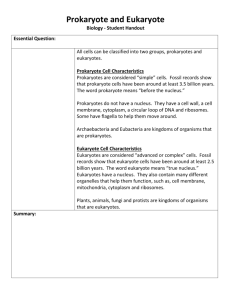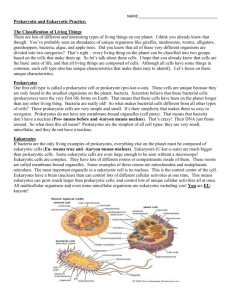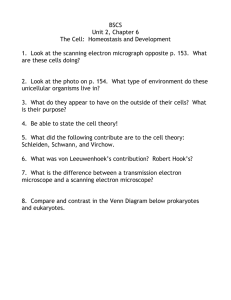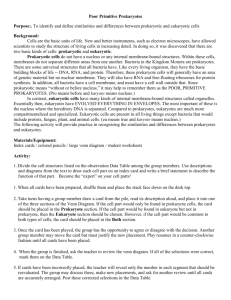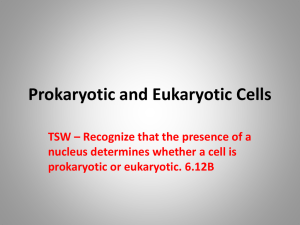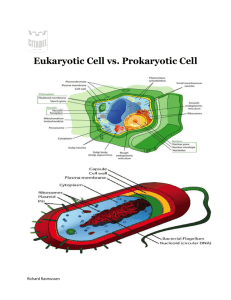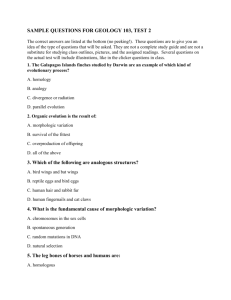writing in science pro vs eu cells
advertisement
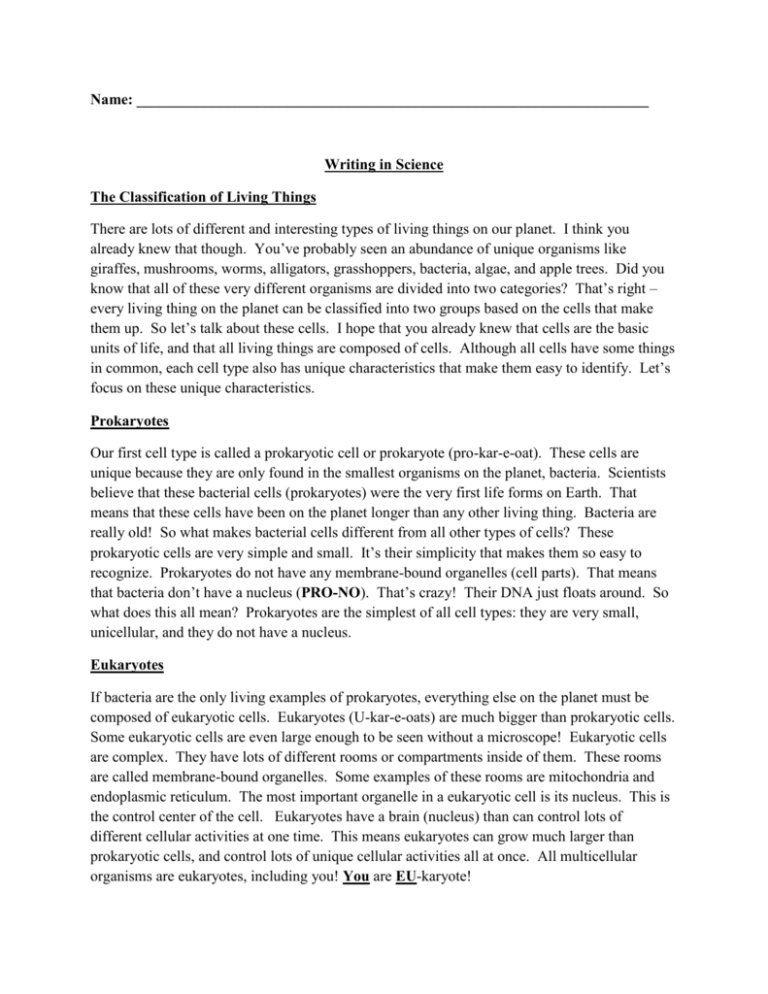
Name: ____________________________________________________________________ Writing in Science The Classification of Living Things There are lots of different and interesting types of living things on our planet. I think you already knew that though. You’ve probably seen an abundance of unique organisms like giraffes, mushrooms, worms, alligators, grasshoppers, bacteria, algae, and apple trees. Did you know that all of these very different organisms are divided into two categories? That’s right – every living thing on the planet can be classified into two groups based on the cells that make them up. So let’s talk about these cells. I hope that you already knew that cells are the basic units of life, and that all living things are composed of cells. Although all cells have some things in common, each cell type also has unique characteristics that make them easy to identify. Let’s focus on these unique characteristics. Prokaryotes Our first cell type is called a prokaryotic cell or prokaryote (pro-kar-e-oat). These cells are unique because they are only found in the smallest organisms on the planet, bacteria. Scientists believe that these bacterial cells (prokaryotes) were the very first life forms on Earth. That means that these cells have been on the planet longer than any other living thing. Bacteria are really old! So what makes bacterial cells different from all other types of cells? These prokaryotic cells are very simple and small. It’s their simplicity that makes them so easy to recognize. Prokaryotes do not have any membrane-bound organelles (cell parts). That means that bacteria don’t have a nucleus (PRO-NO). That’s crazy! Their DNA just floats around. So what does this all mean? Prokaryotes are the simplest of all cell types: they are very small, unicellular, and they do not have a nucleus. Eukaryotes If bacteria are the only living examples of prokaryotes, everything else on the planet must be composed of eukaryotic cells. Eukaryotes (U-kar-e-oats) are much bigger than prokaryotic cells. Some eukaryotic cells are even large enough to be seen without a microscope! Eukaryotic cells are complex. They have lots of different rooms or compartments inside of them. These rooms are called membrane-bound organelles. Some examples of these rooms are mitochondria and endoplasmic reticulum. The most important organelle in a eukaryotic cell is its nucleus. This is the control center of the cell. Eukaryotes have a brain (nucleus) than can control lots of different cellular activities at one time. This means eukaryotes can grow much larger than prokaryotic cells, and control lots of unique cellular activities all at once. All multicellular organisms are eukaryotes, including you! You are EU-karyote! Assignment: Choose one of the options below to demonstrate your understanding of the different types of cells ONLINE DATING AD WELCOME TO C’VILLE (CELL-VILLE) Pretend you are a prokaryote or eukaryote trying to get a date with the opposite type of cell. Talk about yourself, what you’re looking for in a partner, the similarities you share, and what makes you different. You are the mayor of C’ville (Cell-ville). Tell us about your citizens! Who lives in c’ville? What do all the citizens of c’ville have in common? What are some things that make them different? Rubric: Make sure you look over the rubric below before you begin writing! Score Non-Proficient Proficient Provides an Provides an example of a example of a Criteria prokaryote and prokaryote and an example of a an example of a eukaryote eukaryote Explains at least one similarity between prokaryotes and eukaryotes Explains at least two differences between prokaryotes and eukaryotes Mastery Provides an example of a prokaryote and an example of a eukaryote Explains at least two similarities between prokaryotes and eukaryotes Explains at least three differences between prokaryotes and eukaryotes
